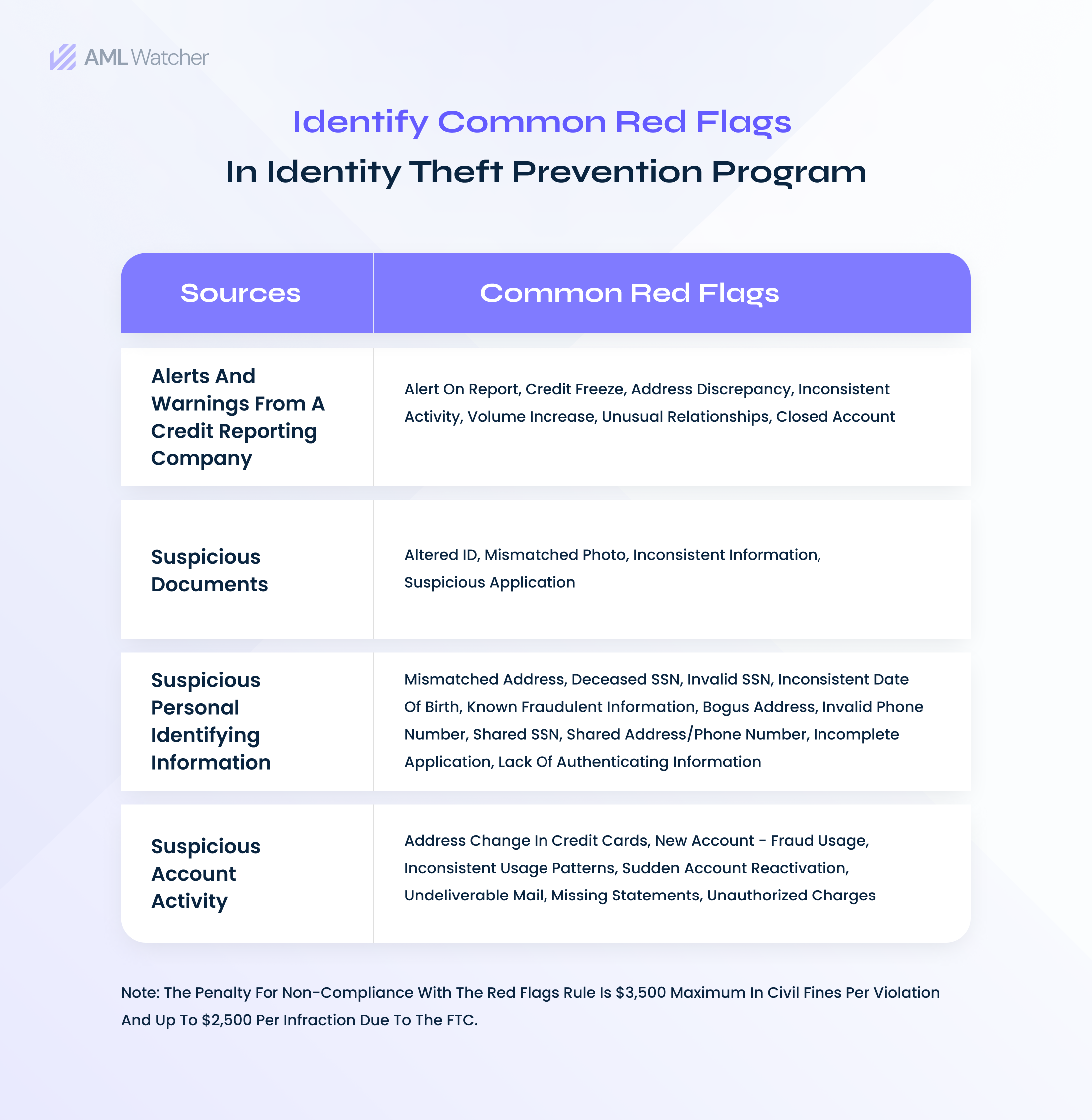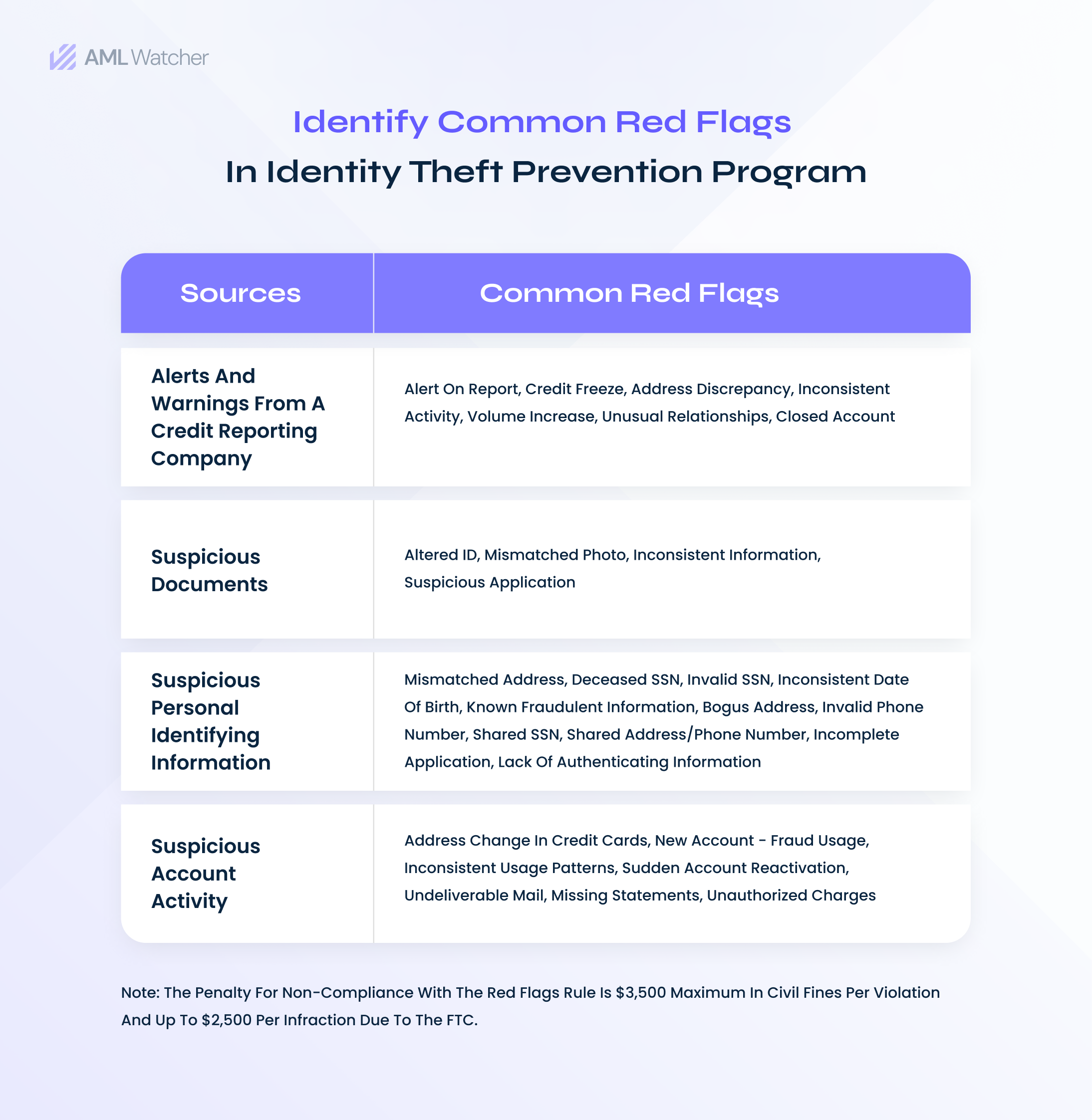
Red Flag Rules: A Roadmap to Financial and Data Vigilance
In a global village where around 64.5% of the global population is connected to each other through digital mediums, 19% of continuously rising cybercrime incidents were recorded to facilitate identity theft, in the year 2023. Along with causing global financial damage of $43 billion in 2022, incidents of identity theft bring emotional and psychological damages to the affected individuals. In a digitally dominating world where identity information is required to avail any service whether financial or non-financial, the red flags rules work as a vigilant watch dog while safeguarding the data and user information that flows across the continents.
In this blog we will be uncovering the intricate layers of financial threats leading to identity theft and how we can solve the mystery of rules outlined to identify the red flags while the orchestration of a vigilant security plan is inevitable. Let’s get into it before some crook head infiltrates your database and steals someone’s identity.
What are Red Flags Rules?
Aimed to serve the purpose of a dam which restricts the waves of deceit, rules to identify and detect red flags require the composition and implementation of an identity theft prevention program within a business framework. The staggering consequences of identity theft can be tackled and prevented through proactive identification of warning signs that appear in daily business operations. The effective implementation of these rules majorly relies on the determination of such alarms or red flags which are then catered through in-house programs designed to protect the users data in adherence to the US Federal Trade Commission (FTC) Act.
Orchestration of “Red Flags” Rule: A Regulatory Recap
As an enforcement of the fair credit reporting act to have active policies and programs protecting the sensitive user information hence avoiding identity theft, the Federal Trade Commision and other agencies were directed by the Congress to promulgate the infamous red flags rule in 2007 which was then made effective from Jan 2008 with a number of enforcement delays. It is alarming to realize that a large number of firms are not aware of the non-compliance cost as there are no on-field compliance gatekeepers or audit hammers, however, the non-compliance comes with monetary penalties and legal shortcomings when an incident is reported.
On the alleged charges of compromising a user’s data and misusing his credit information, Vivint, a smart home monitoring company agreed to pay a settlement amount of $20 million to the FTC. The Utah based company indifferently allowed an unqualified customer with insufficient credit information to use their services while violating the Fair Credit Reporting Act and the Red Flags Rules.
Who is obligated to comply with the Rules?
Designed to fortify the Fair and Accurate Credit Transactions Act, the rules to spot threatening patterns and flags are needed to be employed by the financial institutions, creditors and those who have covered accounts. Let’s find out if your business falls under the below categories.
Financial Institutions
Outlined by the “Red Flags” rules, a financial institution is broadly defined as businesses are,
- National or state banks
- Savings and loan associations (state or federal)
- Credit unions (state or federal)
- Mutual savings banks
The National Credit Union Administration or federal regulatory bank agencies design and monitor guidelines for federal credit unions and savings and loan associations while the remaining financial institutions including those who provide services to consumers for third party transfers are regulated by the Federal Trade Commission.
Creditors
If your business falls under the below categories, it defines you as a “Creditor” and obligates you to the FTC’s red flags rules.
- Companies that offer services or goods with deferred payment systems such as healthcare service providers, utility companies, and telecommunication service providers.
- Firms with offered services of loans, credit extension providers or decision makers or more broadly include mortgage brokers, automobile dealers, real estate agents, and retailers.
Is it Crucial to Determine Covered Accounts?
The efficient risk assessment to detect, deal, and prevent identity theft and preserve cosumer’s trust relies on the determination of “Covered Accounts” a term used by the Flags Rules. After identifying whether your business falls in the category of financial institutions or creditors, the accounts of new and existing customers need to be analyzed which can be further categorized as below.
Account Type 1
Enabled with multiple transactions or payments, accounts used for personal or family purposes are considered covered accounts. For instance, credit accounts, loan accounts, utility accounts, cell phone and checking accounts, and automobile and mortgage loans.
Account Type 2
Identification of other accounts which carries potential threats for identity deception, reputational, and compliance risks defines the second type of covered accounts. They include, small business or startup accounts and business accounts run by one individual (sole proprietorship). While identifying the second category of covered accounts, one must analyze the pattern or process of how these accounts are owned and accessed.
Depending on the risk based approach, remotely accessible accounts should also be considered in the risk assessment process to avoid potential identity theft risks.
Fight Against Frauds: How the Rules Work?
With precise and clear guidelines on how to deploy an efficient Identity Theft Prevention Program, the red flags rules outline the primary features of a robust program as explored below.
Policies & Procedures: Identify the Foreseeable Threats
The placement of written and actionable policies and procedures for businesses obliged under the rule is paramount. These policies should address the identification of all “red flags” that may appear in daily business operations. The so-called red flags can be suspicious or unnatural patterns or activities or the submitted IDs for verification purposes that appear fake is considered a red flag that needs to be addressed through in-house identity theft prevention plan.
Detection of Red Flags
Once the functional policies are placed through, businesses need to have actionable plans to detect the potential threats or red flags. If a fake ID has been identified as a red flag, the next move is to detect the problematic part or forged document.
Actionable Measures: Cater the Threats
One of the defining pillars for your fraud prevention framework is the presence of proper actions needed to be taken after detecting a red flag.
Upgradation of Program: Meet the Dynamic Challenges
It is not a one time task to write down the policies and craft actionable measures, but the evolving nature of cybercrimes and particularly identity theft risks requires businesses to upgrade and regularly evaluate the program to dynamically identify and prevent such risks.
Policies on Papers: Is it Enough for Risk Mitigation?
Only if writing down the policies could prevent all the frauds, but the implementation of said risk mitigation strategy into day-to-day business operations allows organizations to remarkably reduce the threats of identity theft. The initial deployment of the program needs approval from the board of director or senior level employee appropriate for the job.
Coupled with staff training to efficiently employ the program into existing compliance framework, it is important to critically choose third party service providers catering part of the prevention program.
Constitution of Prevention Plan: Explore the Red Flags?
You might wonder if you already have the data security measures in place, is it still required to have an identity theft prevention plan? The answer resides within the fact that the red flags rules are distinct from other in-house compliance measures and operate as one single player against the identity thieves in the data landscape. Where data security aids businesses to secure the sensitive information of consumer’s data from cyberattacks, the identification of red flags enables the proactive identification of potential fraud.
What are the Common Red Flags?
One must consider the risk factors that possibly lead to identity theft and identify the sources of red flags by means of active information sharing of similar incidents across the industry. There are no hard and fast rules to name the red flags which could bring the identity frauds in actions, however, the concise idea of possible red flags can help formulate a robust shield against identity theft. They include, not limited to, the following,
- Various alarms and suspicious patterns on the credit reports from credit reporting companies.
- Possible alterations in the verification documents where a picture or signature might appear different or forged.
- Inconsistencies of user identity information such as social security number, invalid contact details, or vague mailing addresses in various documents.
- Incorporating suspicious account activities, unusual patterns to use the account also raise red flags such as unauthorized transactions or charges performed through the account, undelivered mails and statements on the registered posting address while the account is in constant use, etc.
- Red flags or fraud risks identified by the third source such as any client, a victim of identity theft, or from law enforcement resources.
Prevention and Mitigation of Identified Threats
Once the foreseeable identity theft flags are identified and detected through functional measures empowered by policies, the red flags rules outline the possible measures needed to be taken including,
- Rigorous monitoring of accounts identified as “covered”.
- Taking the customer in loop regarding the raised concern.
- Overtaking the covered account through in-house procedures such as changing security codes and passwords.
- Locking the existing account
- Informing the law enforcement bodies
- Restricting account activity or declining the account access by any debt collector
Depending upon the size, nature and complexity of the business, the magnitude of risks can vary and businesses are required to take optimum measures to stay current with the evolving threats and updated tactics of crime actors.
Regulate the Program: A Vigilant Administration is Imperative
With an active administration of the business risk program to identify, detect, and prevent the threats, the possible changes and amendments are overlooked by the board of directors or any designated authority to monitor the effectiveness of the program. A vigilant administration deals with the following.
Training of Fraud Fighters
Not limited to the fraud prevention force, regular and necessary training must be provided to the staff who can play a vital role in catering the red flags.
Regulate your Service Providers
Regular audit and monitoring of third party service providers is a non-negotiable measure to stay compliant with the FTC’s rules and regulations.
Evaluation of the Program
The authority overlooking the implementation of the program is required to report the performance and effectiveness of the monitoring program to the designated board of directors or relevant body. It determines the measures taken are aligned with the risk requirements.
Key Takeaways: Let’s Wrap it!
The digitally connected world is heavily posed to cybercrimes while identity theft is one of troublemakers which caused the identity of 0.8 million people to be compromised in the third quarter of the year 2023. To protect the integrity of the global financial system and consumer trust on the authorities, complying to the rules and regulations which are designed to meet the said purpose, is not just a business but ethical responsibility. Red flags rules, which serve the grounds to design a resilience against identity thefts, enforce the development of compliance culture to prevent frauds and financial crimes. AML Watcher, with a vision to make compliance easy for you, offers you a partnership which is reliable and responsible towards the united goals of a sustainable financial system.
We are here to consult you
Switch to AML Watcher today and reduce your current AML cost by 50% - no questions asked.
- Find right product and pricing for your business
- Get your current solution provider audit & minimise your changeover risk
- Gain expert insights with quick response time to your queries




